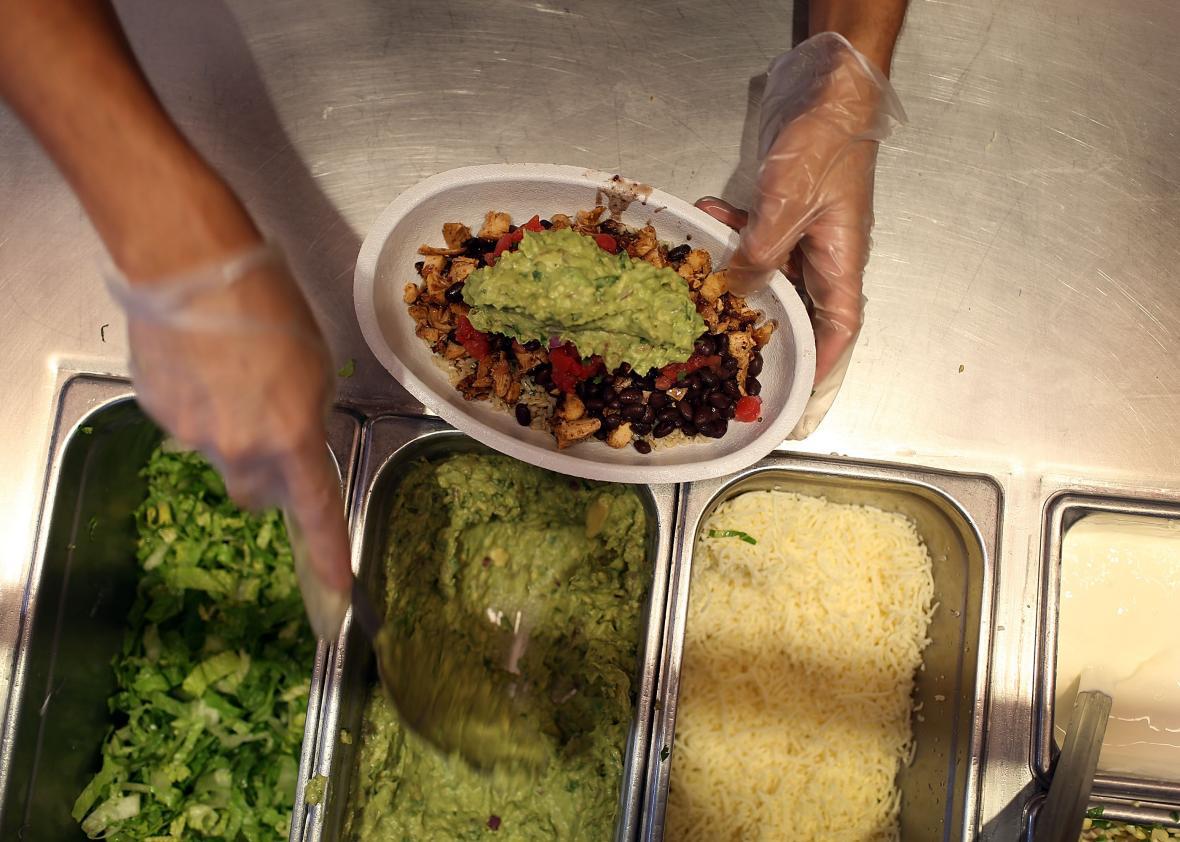This article originally appeared on Business Insider.
As Chipotle’s summer rewards program comes to a close, the results are looking less than positive.
In July, the chain launched Chiptopia, a three-month promotion tied to the number of times customers visit Chipotle.
The program had some of the best rewards in the restaurant business, with tons of opportunities for customers to get free food.
By late July, the program had more than 3.6 million participants and accounted for 30 percent of all transactions.
Today, Chipotle says more than 3.1 million customers have registered and used their Chiptopia cards. According to the company, 1.2 million users signing up in August and 85,000 participants are on track to earn the catering reward, meaning they visited at least 11 times each month for the last three months.
More than 3 million participants means spending a lot of money on free burritos, especially after the company gave away roughly $70 million in free-food coupons from February to May. Free food has been key to Chipotle’s game plan to win back customers after E. coli outbreaks helped drive away business, with the chain’s same-store sales dropping 30 percent in the first quarter of 2016.
However, as September ends and the program comes to a close, it seems it has failed to address one of Chipotle’s biggest problems: customer perception.
The chain has hit a wall in terms of brand perception, according to YouGov BrandIndex data. On July 1, the day Chiptopia launched, consumer perception of the brand’s quality was 9.4, on a scale of -100 to 100. On September 20, that rating had dropped to 6.8, after almost three months of staying roughly the same.
Earlier this week, Chipotle marketing director Mark Crumpacker said in an interview that the chain was losing customers to fast-food giant McDonald’s. On Wednesday, the chain launched a new campaign attempting to convince customers the food is safe to eat, after the E. coli outbreaks that drove away customers.
“Chiptopia was not a perception tool, though other programs have been having a positive impact on consumer perceptions,” Chipotle’s communications director, Chris Arnold, said in an email to Business Insider, noting the ad “A Love Story” has helped boost customer perception.
“The program we launched yesterday, to update people on some of the important food-safety changes we have made, serves yet a different purpose,” Arnold continued. “We promised our customers that we would establish Chipotle as an industry leader in food safety, so we wanted to be transparent about many of the food-safety advancements we have put in place.”
Still, a rewards program seems like it should earn some goodwill from customers, especially one with rewards as good as Chipotle’s. Chiptopia is, by all measures, a great deal—one of the best in the restaurant industry. If you buy 12 burritos over the three months (four a month), you get four free burritos. That means it has a return rate of roughly 33 percent for customers.
That’s an incredibly high return rate. For example, look at Starbucks, which has an incredibly successful rewards program. Starbucks Rewards members earn a free food or drink item after spending $62.50. A semi-pricey Starbucks drinks is $5, meaning you’re generously receiving an 8 percent return.
Chipotle’s rewards program seems to be facing two big problems when it comes to driving customer perception: It is too confusing to the average customer and not sustainable for Chipotle in the long term.
From the start, Chiptopia has been aimed at Chipotle loyalists—in part because the program is too confusing for any other customers. The three-tiered system takes quite a bit of studying to sort out, with each level having slightly different rewards and a long list of qualifiers.
In August, Morgan Stanley wrote in a research note that the program had helped convince loyal Chipotle customers to resume their prior frequency, but had not impacted the more casual customers that make up 75% of the chain’s customers. While the most loyal quarter of the chain’s customer base make up 60 percent to 70 percent of visits, if Chipotle wants to reach its former level of customer perception and sales, it needs to recapture the average consumer as well.
Which brings us to the second problem: Chiptopia wasn’t designed to perform in the long term. Just as Chipotle can’t afford to keep giving out free burritos forever, a rewards program with a 33 percent return rate would end up being extraordinarily expensive for the company.
That could be a problem for Chipotle.
“The program’s end in September could alienate some customers just as they are getting accustomed to the rewards,” BTIG analyst Peter Saleh wrote in a July research note.
Chipotle said two months ago that it was already working on a permanent program to prevent backlash once Chiptopia ends. The new program has not yet been announced by Chipotle, though the company is insistent that it is on the right track to make a comeback.
“Recovery is happening,” says Arnold. “Since the investigation ended about seven months ago, we have recovered about 40 percent of the sales we lost from the low point in January (as of our most recent reporting period at the end of the second quarter), and introduced programs to help stimulate frequency and restore trust. These things are also moving in the right direction. But none of this happens overnight.”
A new rewards program is likely another program with the goal of moving things in that direction in the near future. Hopefully for Chipotle, an updated program will be less confusing—even if rewards are less bountiful.
